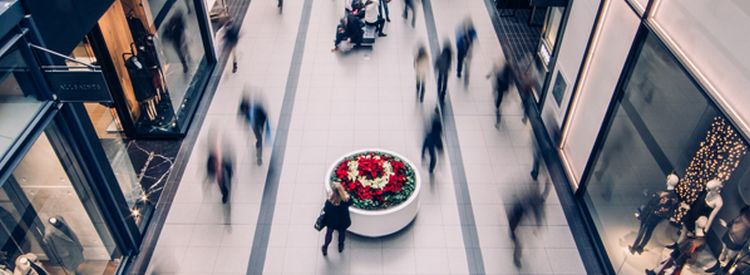Article
How Data is Changing Loss Prevention
Even if you have a toe in the retail industry, you’re likely familiar with some of retail’s hottest buzzwords driving the future of the industry, including “machine learning” and “analytics.” Machine learning and analytics have made their way onto the NRF show floor in different capacities for a few years now, and the industry is continuing to gravitate toward data-driven trends in inventory, traffic, operations and e-commerce that influence decision making. However, the challenge for retailers has never been getting data, rather “what do we do with it now, how do we make these insights actionable?”
Recent deployments of data analytics have transformed otherwise unused data into actionable insights. The net result: dramatically more effective decision making that truly gives any type of retailer a seat at the table with behemoth e-commerce giants (ahem, Amazon) and other retail disruptors.
Despite having access to this highly meaningful information, data analytics deployments and real-time awareness isn’t being leveraged as much as it should be across the industry. Loss Prevention has made some progress around analytics, especially around point-of-sale. Much more is possible if you take a step back and just like the retail industry look at the problem holistically across shoplifting, employee theft and organized retail crime (ORC).
If we’re comparing all areas of retail, loss prevention has historically been burdened with greater challenges of error alarms, malfunctions and even downtime from dishonest employees purposely circumventing security solutions. And, while traditional brick-and-mortar retailers may have gotten by in the past, this approach won’t cut it anymore in today’s always on, unified commerce environment.
It is time for Loss Prevention to have a major position at the CxO executive table.
Proactive-Predictive-Preventative
By compiling data from your entire enterprise in one place, you can understand how a weakness in operations leads to more opportunistic shoplifting across regions or even identify patterns in ORC by tracking jammers and foil-lined bags.
Take a minute to really think about this – being able to actually see and predict where crime events will strike! This is game-changing for loss prevention professionals, and has dramatic implications for operations.
By leveraging real-time reliable data, retailers can improve on-shelf availability and a deliver better customer experience to help drive sales – and let’s not forget overall profitability. Retailers can assign a financial value to a loss event to help other business leaders – including CFOs – understand the impact of shrink. Of course, this also swings the other way; retailers who understand, track and respond to shrink better will be able to brag about improved store performance and better bottom lines on their earnings calls – and not to mention, will be the talk of the retail town and epitome of what other retailers hope to achieve themselves.
After all, the hyper-attention from the market on retailer’s bottom line and the impact of shrink on business objectives cannot be understated. According to the Sensormatic® Global Shrink Index, a new study conducted by global retail market intelligence provider PlanetRetail RNG, shrink costs retailers nearly $100 billion globally. The objective of this research—one of the largest loss prevention studies in recent years—is to understand global shrinkage from a total of 1,120 respondents representing a mix of retailers across 13 verticals in 14 countries. They manage over 229,000 stores and generated $1.56 trillion in sales during 2016-2107. The retailers operate in the world’s leading economies, which account for 73 percent of global GDP and retailers account for 80 percent of total retail sales. Shrinkage rates are reported at 1.82 percent of annual retail sale. That’s a lot of loss.
With so much at stake, retailers should turn to preventative measures to minimize opportunities for theft and ultimately improve shrink. When shrink does occur – leverage data to understand how it happened, work to identify root causes and take corrective action to avoid similar problems in the future.
You can learn more about our Shrink Management as a Service (SMaaS) offerings, here
Explore Related Topics

Contact us to learn more about our Loss Prevention solutions.
Contact UsStay one step ahead with our articles, insights and latest news.
See more


